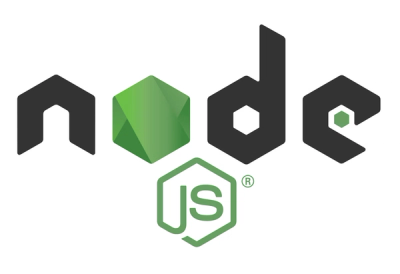
Security News
ECMAScript 2025 Finalized with Iterator Helpers, Set Methods, RegExp.escape, and More
ECMAScript 2025 introduces Iterator Helpers, Set methods, JSON modules, and more in its latest spec update approved by Ecma in June 2025.
@vatis-tech/asr-client-js
Advanced tools




Install the latest version
npm i @vatis-tech/asr-client-js
This will install the latest version of @vatis-tech/asr-client-js with the caret (^) symbol to its version, inside the package.json file.
This means, that when you will do a later install into your project, it will take the latest minor version.
You can read more about this here: npm caret and tilde.
Install the exact latest version.
npm i -E @vatis-tech/asr-client-js
This will install the latest version of @vatis-tech/asr-client-js without the caret (^).
This means that on each new install, you will still have the initial installed version.
You can read more about this here: npm install --save-exact.
You can also use this plugin via CDN, and use it inside an HTML & JavaScript project, that will run in browsers. Just copy and paste the following script into your project:
<script src="unpkg.com/@vatis-tech/asr-client-js@1.2.1/umd/vatis-tech-asr-client.umd.js" charset="utf-8"></script>
You can also choose to download it, and use it locally, instead of a CDN. You can download it by pressing the following link: download here. Or, download it from Github here. After that copy and paste the following script into your app:
<script src="%path%/asr-client-js/dist/umd/vatis-tech-asr-client.umd.js" charset="utf-8"></script>
And replace %path% with the path where you've downloaded and unzipped the plugin.
First you need to import the plugin:
import VTC from "@vatis-tech/asr-client-js";
After that, you can initialize it like so:
const vtc = new VTC({
service: "LIVE_ASR",
language: "ro_RO",
apiKey: "YOUR_API_KEY",
onData: (data) => { console.log(data); },
log: true,
});
If you opted out to use it as a downloadable or CDN (i.e. via a script tag inside a static HTML & JavaScript project), you will be able to use the constructor as follows:
const vtc = new VatisTechClient.default({
service: "LIVE_ASR",
language: "ro_RO",
apiKey: "YOUR_API_KEY",
onData: (data) => { console.log(data); },
log: true,
});
configThis is an Object with the following structure:
{
"spokenCommandsList": [
{
"command": "COMMAND_NAME",
"regex": [ "regex1", "regex2", "regex3", ... ]
},
...
],
"findReplaceList": [
{
"replacement": "REPLACEMENT",
"regex": [ "regex1", "regex2", "regex3", ... ]
}
]
}
spokenCommandsListWhere the value of spokenCommandsList is an array of objects that have two properties, command and regex.
The value of the command, i.e. COMMAND_NAME, is a String.
The value of the regex, i.e. [ "regex1", "regex2", "regex3", ... ], is an Array of Strings, i.e. regex1, regex2, regex3 are Strings.
The ideea with this spokenCommandsList, is that each time one of the values from the regex array is matched in the transcript, it will fire the onCommandData callback, with a special header on the data, named SpokenCommand.
The value of the SpokenCommand header will be exactly the value of the command, i.e. COMMAND_NAME.
For example, you can use this spokenCommandsList to define rules of when you want a new paragraph:
{
"spokenCommandsList": [
{
"command": "NEW_LINE",
"regex": ["new line", "new paragraph", "from the start", "start new line"]
}
]
}
So each time the back-end algorithm will find in the transcript one of "new line", "new paragraph", "from the start", "start new line" phrases, the VTC client will fire the onCommandData callback. This way, in your application, you will be able to know, when to start a new paragraph.
findReplaceListAnd the value of findReplaceList is an array of objects that have two properties, replacement and regex.
The value of the replacement, i.e. REPLACEMENT, is a String.
The value of the regex, i.e. [ "regex1", "regex2", "regex3", ... ], is an Array of Strings, i.e. regex1, regex2, regex3 are Strings.
The ideea with this findReplaceList, is that each time one of the values from the regex array is matched in the transcript, it will change it to the replacement.
For example, you can use this findReplaceList to define rules for wrong named entities
{
"findReplaceList": [
{
"replacement": "SpongeBob",
"regex": ["Spange Bwab", "SpanBob", "Spwange Bob", "Sponge Boob"]
}
]
}
So each time the back-end algorithm will find in the transcript one of "Spange Bwab", "SpanBob", "Spwange Bob", "Sponge Boob" phrases, it will change it to "SpongeBob".
You can also have replacements as symbols and punctuation marks:
{
"findReplaceList": [
{
"replacement": "(",
"regex": ["open parentheses", "new parentheses"]
},
{
"replacement": ")",
"regex": ["close parentheses", "stop parentheses"]
},
{
"replacement": "[",
"regex": ["open square brackets", "new square brackets"]
},
{
"replacement": "]",
"regex": ["close square brackets", "stop square brackets"]
}
]
}
When sending a config to the client, the first callback to be fired, will be the onConfig callback.
serviceThis is a String that refers to the service that you would like to use.
Vatis Tech offers two speech-to-text services, LIVE_ASR, you will receive the transcript while recording your microphone.
And STATIC_ASR, you upload a file, and receive the transcript on a given link (at the moment, this plugin does not support this feature).
Only LIVE_ASR can be used at the moment.
modelThis is a String that represents the ID of the model you want to use.
If not specified, the default model of the selected language will be used.
languageThis is a String for the language you want to transcribe from.
It must be in the following format: language_region.
At the moment, only ro_RO is available.
apiKeyThis is a String of your API key.
To get one, please follow these instructions:
@vatis-tech/asr-client-js constructor.connectionConfigThis is an Object with the following structure:
{
"service_host": "service_host",
"use_same_service_host_on_ws_connection": true | false,
"auth_token": "auth_token"
}
Where service_host is a string, and the value of it is the host where the Vatis Tech Transcription Service is located. And auth_token is a string, that is the Authentication token for connecting to the Vatis Tech Transcription Service.
The use_same_service_host_on_ws_connection specifies if the returned live service IP should be ignored when making the connection, and the service_host should be used instead. It defaults to false.
You will only use one of the connectionConfig or apiKey method to connect to the Vatis Tech Transcription Service.
You will use the apiKey when connecting to the Vatis Tech Cloud API, and you will use the connectionConfig method when using the Vatis Tech On Premise Installation, and you will be provided with the necessary connectionConfig object.
onDataThis is a Function on which you will receive from the back-end the transcript chunks. It is a callback it is always fired..
It has the following signature:
const onData = (data) => {
/* do something with data */
}
Or with function names:
function onData(data) {
/* do something with data */
}
The data object that is received has the following structure:
{
"type": "<str>",
"headers": {
"key1": "value1",
"key2": "value2"
}
}
{
"type": "TIMESTAMPED_TRANSCRIPTION",
"headers": {},
"transcript": "hello world",
"words": [
{
"word": "hello",
"start_time": 1350.39,
"end_time": 4600.5,
"speaker": "Speaker 1",
"confidence": 0.96,
"entity": null,
"entity_group_id": null
},
{
"word": "world",
"start_time": 6200.3,
"end_time": 8020.0,
"speaker": "Speaker 1",
"confidence": 0.98,
"entity": null,
"entity_group_id": null
}
]
}
{
"type": "PROCESSED_TIMESTAMPED_TRANSCRIPTION",
"headers": {},
"transcript": "Hello, world!",
"words": [
{
"word": "hello",
"start_time": 1350.39,
"end_time": 4600.5,
"speaker": "Speaker 1",
"confidence": 0.96,
"entity": null,
"entity_group_id": null
},
{
"word": "world",
"start_time": 6200.3,
"end_time": 8020.0,
"speaker": "Speaker 1",
"confidence": 0.98,
"entity": null,
"entity_group_id": null
}
],
"processed_words": [
{
"word": "Hello,",
"start_time": 1350.39,
"end_time": 4600.5,
"speaker": "Speaker 1",
"confidence": 0.96,
"entity": null,
"entity_group_id": null
},
{
"word": "world!",
"start_time": 6200.3,
"end_time": 8020.0,
"speaker": "Speaker 1",
"confidence": 0.98,
"entity": null,
"entity_group_id": null
}
]
}
| Name | Type | Description |
|---|---|---|
| PacketNumber | int | Incremental packet number |
| Sid | string | Session id |
| FrameStartTime | double | Frame start time in milliseconds |
| FrameEndTime | double | Frame end time in milliseconds |
| FinalFrame | boolean | Flag for marking that a segment of speech has ended and it won't be updated |
| SilenceDetected | boolean | Flag to indicate silence was detected on the audio frame |
| ProcessingTimeSeconds | double | Time of inferencing |
| SplitPacket | boolean | Flag that indicates the response packet was split and this is one of the pieces |
| FinalSplitPacket | boolean | Flag that indicates this is the final piece of the split response |
| SplitId | string | Full packet id in format <packet_number>.<split_id>.<sub-split-id>.<sub-sub-split-id> |
| RequestBytes | int | Additional bytes requested to produce a frame. This is just an estimation, any number of bytes can be sent |
| SpokenCommand | string | Command detected in frame |
So, the data can be final frame - i.e. the backend has fully finalized the transcript for those words and the time intervals (start and end time).
Or can be partial frame - i.e. the backend has not fully finalized the transcript for those words and the time intervals, and it will most likely change until it is overlapped by a final frame.
onPartialDataThis is a Function on which you will receive from the back-end the partial transcript chunks.
It is identical to what the onData callback does, just that the data will always represent partial frames.
It has the following signature:
const onPartialData = (data) => {
/* do something with data */
}
Or with function names:
function onPartialData(data) {
/* do something with data */
}
The data object that comes on the current onPartialData callback overrides the data object that came on the previous onPartialData callback.
onFinalDataThis is a Function on which you will receive from the back-end the final transcript chunks.
It is identical to what the onData callback does, just that the data will always represent final frames.
It has the following signature:
const onFinalData = (data) => {
/* do something with data */
}
Or with function names:
function onFinalData(data) {
/* do something with data */
}
The data object that comes from the onFinalData callback overrides the data object that came on the previous onPartialData callback.
onConfigThis is a Function on which you will receive from the back-end a message saying if the config was succesfully added ore not.
It has the following signature:
const onConfig = (data) => {
/* do something with data */
}
Where data object has the following structure:
{
"type": "CONFIG_APPLIED",
"headers": {},
"config_packet": {
"type": "CONFIG",
"headers": {},
"spokenCommandsList": [
{
"command": "NEW_PARAGRAPH",
"regex": ["new line"]
}
]
}
}
onCommandDataThis is a Function on which you will receive from the back-end the transcript chunks for speciffic commands.
For example, if you initialize the plugin with a set of commands (e.g. {spokenCommandsList: [ { "command": "NEW_PARAGRAPH", "regex": ["start new paragraph", "new phrase", "new sentence"] } ] }), each time the back-end algorithm will find these sets of commands, it will send on this function the data.
It has the following signature:
const onCommandData = (data) => {
/* do something with data */
}
Or with function names:
function onCommandData(data) {
/* do something with data */
}
The data object from this callback, is the same as the one from onData callback, but it also has a new property, named spokenCommand, with the actual command that triggered the callback.
logThis is a Boolean prop.
If set to true, it will call the logger function with an object that has the following structure:
{
currentState: ...,
description: ....
}
This tells you the current state of the plugin.
The last state will be the following:
{
currentState: `@vatis-tech/asr-client-js: Initialized the "MicrophoneGenerator" plugin.`,
description: `@vatis-tech/asr-client-js: The MicrophoneGenerator was successful into getting user's microphone, and will start sending data each 1 second.`,
}
loggerThis is a Function on which you will receive data about the plugin state.
It has the following signature:
const logger = (info) => {
/* do something with info */
}
Or with function names:
function onData(info) {
/* do something with info */
}
The info object that is received has the props from above.
If log prop is set to true and the logger prop is not set, or is not a function with the above signature, the plugin will default the logger to console.log.
onDestroyCallbackThis is a Function that will be called upon successful destruction;
errorHandlerThis is a Function that will be called upon errors;
hostThis is the host for generating a key. It defaults to "https://vatis.tech/".
microphoneTimesliceHow fast you want data to be captured from the microphone. Default is 250 milliseconds.
frameLengthThe frame length of what the microphone catches. Default is 0.3 seconds. (For a microphoneTimeslice of 250, the frameLength is 0.3).
frameOverlapDefault is 0.3 seconds.
bufferOffsetDefault is 0.3 seconds.
waitingAfterMessagesThis is a number that needs to be > 0. It represents the number of message to be sent to the ASR Service, before waiting for a response. Default is 5.
EnableOnCommandFinalFrameThis is a boolean, and if set to true, it means, that each time the transcription sees one command, it will trigger a final frame there.
destroyThis will destroy the instantiated @vatis-tech/asr-client-js.
Also, the destroy method will be invoked if any error will come through the socket.io-client as a response from Vatis Tech ASR SERVICE.
NOTE! If the VTC plugin did not send all messages, or it did not receive all messages, the destruction will not happen instantly.
NOTE! The destruction of the VTC plugin will happen only when all messages have been sent and received.
NOTE! If you wish to destroy the VTC plugin without waiting for all messages to be sent and received, you can pass { hard: true} as a parameter to the .destroy call.
pauseCall this method, if you want to pause for a while the recording.
resumeAfter calling the pause method, you can call this one to resume recording.
microphoneDeviceIdThis is to specify which audioinput device id, should be used by the client. If undefined or the browser does not have that audioinput device id, it will select a default one.
You can read more on the following links:
Call this methos if you want to download the audio file as audio/webm type.
Call this methos if you want to get all chunks from your michrophone as blobs.
You can then use this to download the audio as you wish. Below is an example of downloading as audio/webm.
// ... code
try {
const allBlobData = vtc.getRecordingAsBlobChunks();
if (allBlobData && allBlobData.length) {
const audioBlob = new Blob(allBlobData, {
type: "audio/webm",
});
const audioUrl = URL.createObjectURL(audioBlob);
const anchor = document.createElement("a");
anchor.style.display = "none";
document.body.appendChild(anchor);
anchor.href = audioUrl;
anchor.download = "audio.webm";
anchor.click();
window.URL.revokeObjectURL(audioUrl);
anchor?.remove();
}
} catch (error) {
console.error(error);
}
// ... code
We officially support the latest versions of the following browsers:
| Chrome | Firefox | Safari | Safari | Edge |
|---|---|---|---|---|
 |  |  |  |  |
We love pull requests!
Our community is safe for all. Before submitting a pull request, please review and agree our Code of Conduct, after that, please check the Contribution guidelines.
If you have questions, you need some help, you've found a bug, or you have an improvement idea, do not hesitate to open an issue here.
There are three types of issues:
To keep the README a bit lighter, you can read the Changelog here.
If you are a developer, the following links might interest you:
If you are just curios to learn more about Vatis Tech, please refer to these links:
[2.0.9] - 2024-01-25
onDownloadRecording method function that downloads the recoreded microphone as audio/webmgetRecordingAsBlobChunks method function that returns all the recoreded microphone chunks as an array of blobNo changes were made.
Nothing was removed.
No fixes were made.
FAQs
JavaScript client for Vatis Tech ASR services.
The npm package @vatis-tech/asr-client-js receives a total of 29 weekly downloads. As such, @vatis-tech/asr-client-js popularity was classified as not popular.
We found that @vatis-tech/asr-client-js demonstrated a not healthy version release cadence and project activity because the last version was released a year ago. It has 1 open source maintainer collaborating on the project.
Did you know?

Socket for GitHub automatically highlights issues in each pull request and monitors the health of all your open source dependencies. Discover the contents of your packages and block harmful activity before you install or update your dependencies.

Security News
ECMAScript 2025 introduces Iterator Helpers, Set methods, JSON modules, and more in its latest spec update approved by Ecma in June 2025.

Security News
A new Node.js homepage button linking to paid support for EOL versions has sparked a heated discussion among contributors and the wider community.

Research
North Korean threat actors linked to the Contagious Interview campaign return with 35 new malicious npm packages using a stealthy multi-stage malware loader.